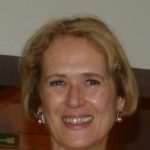Lien vers Pubmed [PMID] – 35248096
Lien DOI – 10.1186/s13023-022-02257-1
Orphanet J Rare Dis 2022 03; 17(1): 121
Cockayne syndrome (CS) is a rare autosomal recessive disorder caused by mutations in ERCC6/CSB or ERCC8/CSA that participate in the transcription-coupled nucleotide excision repair (TC-NER) of UV-induced DNA damage. CS patients display a large heterogeneity of clinical symptoms and severities, the reason of which is not fully understood, and that cannot be anticipated in the diagnostic phase. In addition, little data is available for affected siblings, and this disease is largely undiagnosed in North Africa.We report here the clinical description as well as genetic and functional characterization of eight Tunisian CS patients, including siblings. These patients, who belonged to six unrelated families, underwent complete clinical examination and biochemical analyses. Sanger sequencing was performed for the recurrent mutation in five families, and targeted gene sequencing was done for one patient of the sixth family. We also performed Recovery RNA Synthesis (RRS) to confirm the functional impairment of DNA repair in patient-derived fibroblasts.Six out of eight patients carried a homozygous indel mutation (c.598_600delinsAA) in exon 7 of ERCC8, and displayed a variable clinical spectrum including between siblings sharing the same mutation. The other two patients were siblings who carried a homozygous splice-site variant in ERCC8 (c.843+1G>C). This last pair presented more severe clinical manifestations, which are rarely associated with CSA mutations, leading to gastrostomy and hepatic damage. Impaired TC-NER was confirmed by RRS in six tested patients.This study provides the first deep characterization of case series of CS patients carrying CSA mutations in North Africa. These mutations have been described only in this region and in the Middle-East. We also provide the largest characterization of multiple unrelated patients, as well as siblings, carrying the same mutation, providing a framework for dissecting elusive genotype-phenotype correlations in CS.

